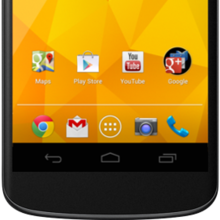News
Article
What’s New with Headaches?
Author(s):
So many good headache studies . . . so little time! Here's a little help.
(Courtesy Wikipedia)

So many good headache studies . . . so little time!
Here is a brief synopsis of 2 new articles on headache that we randomly culled from pubmed-each with full text and links - that we thought you would want to know about, but which you might easily miss.
Commercially available mobile phone headache diary apps: a systematic review.
The background: Headache diaries are often used by patients to self-monitor their headaches. With advances in mobile technology, mobile electronic diary apps are becoming increasingly common. This review identified and evaluated all commercially available mobile headache diary apps for the 2 most popular mobile phone platforms: iOS and Android.
Key Findings: Based on a set of 7 criteria that define an ideal headache diary app:
• Of the 38 apps identified, none met all 7 app criteria.
• The 3 highest scoring apps were iHeadache, ecoHeadache, and Headache Diary Pro.
• Only 18% of the apps were created with scientific or clinical headache expertise.
• None of the apps reported on psychometric properties.
What Might It Mean? Although headache diary apps have proliferated, most do not meet reasonable quality standards. More emphasis on the quality of these tools is needed, which are easily accessed and used by patients to self-manage their headaches.
Brief intervention for medication-overuse headache in primary care. The BIMOH study: a double-blind pragmatic cluster randomised parallel controlled trial.
The background: About half of patients with chronic headache have medication-overuse headache, caused by use of headache medication 10 to 15 days per month (depending on type of medication) for at least 3 months. This double-blind, pragmatic and cluster-randomized controlled trial included more than 25,000 patients who were screened for medication-overuse headache by 50 general practitioners. About half of these clinicians received training in brief intervention, which involved providing feedback about an individual patient’s risk of medication-overuse headache and specific recommendations about how to reduce overuse; the other clinicians continued business as usual with their patients.
Key Findings:
• Headache and medication days were reduced by 7.3 and 7.9 days per month (95% CI 3.2 to 11.3 and 3.2 to 12.5) in the brief intervention group compared to the business-as-usual group, respectively.
• Chronic headache resolved in 50% of patients who received brief intervention and in only 6% of those in the business-as-usual group.
What Might It Mean? Brief intervention provides clinicians with a powerful, time efficient instrument for managing medication-overuse headaches. The treatment is behavioral, simple and inexpensive, and has no side effects.
References:
1. Hundert AS, Huguet A, McGrath PJ et al. Commercially available mobile phone headache diary apps: a systematic review. JMIR Mhealth Uhealth.2014 Aug 19;2(3):e36.
2. Espen Saxhaug Kristoffersen ES, Straand J, Vetvik KG, et al. Brief intervention for medication-overuse headache in primary care. The BIMOH study: a double-blind pragmatic cluster randomised parallel controlled trial. J Neurol Neurosurg Psychiatry. 11 August 2014. doi:10.1136/jnnp-2014-308548




